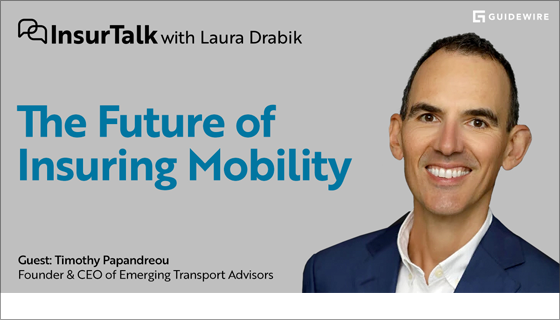
For P&C insurers, advances in 5G telephony, predictive analytics, AI, and other technologies are colliding with accelerating urbanization to create whole new growth opportunities in the Mobility-as-a-Service (MaaS) market. Timothy Papandreou, founder and CEO of Emerging Transport Advisors (ETA) and a global thought leader on emerging technologies and their impact on society, shares insights on what it will take to win in a changing mobility landscape.
According to the United Nations, roughly 80% of the global population will reside in urban centers by 2050—up from just 11.8% in 1950. Within advanced economies, those figures will be even higher. In Japan, Brazil, and the United Kingdom, 90% of residents already live in cities. Within the next year, 83.7% of the US will do the same. Combined with other trends, the impact on personal lines auto revenues will be impossible to ignore. But so will the opportunities.
As it stands now, the average consumer spends just 5% of their day behind the wheel of a personal vehicle. With each passing day, a growing number of exurbanites and city dwellers leverage one or a mix of transportation options spanning ride-hailing, subscription and peer-to-peer car rental services, ride-sharing, bus or train, as well as on-demand e-bikes, scooters, and other forms of micro-mobility. The multi-modal transportation paradigm to emerge from all this is broadly referred to as Mobility-as-a-Service (MaaS).
While technically distinct, both MaaS and Mobility-on-Demand (MOD) are often used interchangeably to describe the mix of vehicles you might use in a given day. And both represent lucrative markets for insurers with the technological prowess to provide coverage for all aspects of mobility journeys across public and private modes of transportation, instead of (just) the vehicles used.
In some cases, this means coverage across the platforms. “I call it the Grand Symphony of Urban Life,” Papandreou said in a recent episode of Guidewire’s InsurTalk podcast, adding, “We’re talking about insurance policies that cover the entire journey, end to end. So it’s not just about the car parked in the garage; it’s about how you use different modes of transport throughout the day.”
This can include coverage for a policyholder’s use of a car for both personal transport and commercial use for a ride-sharing gig—spanning collision, injury, and personal property. Or a train, e-bike, or robo-taxi ride, stacking commercial loss coverage on top of physical injury. It also includes how those vehicles are used and for what purposes. Your car may be used for personal transport some of the time, and used to transport paying customers as part of your ride-sharing gig. Coverage for your train ride into the city might include personal injury, theft, or loss of business.
Papandreou doesn’t see things stopping there. In his view, MaaS is a gateway to whole new types of coverage. “We’re going to have Lifestyle-as-a-Service,” he says. “Whether we own things or services, they should all come under one insurance system that is basically you. It doesn’t matter whether you are going to sleep and lying in a bed, or you’re going to make something, or you’re going to ride or drive something. The insurance should always be there, tailored to your needs.”
Accomplishing this level of coverage will be predicated on carriers possessing a cloud-based infrastructure that combines core, data, and digital to make vast amounts of real-time internal and external data actionable. It’ll also require the creation of mobility ecosystems spanning OEMs, third-party data, and service providers, as well as partnerships with the public sector. But as Papandreou points out, there are already some compelling models to draw from—in cities like London, Singapore, Stockholm, and Milan. Listen to the full interview here.